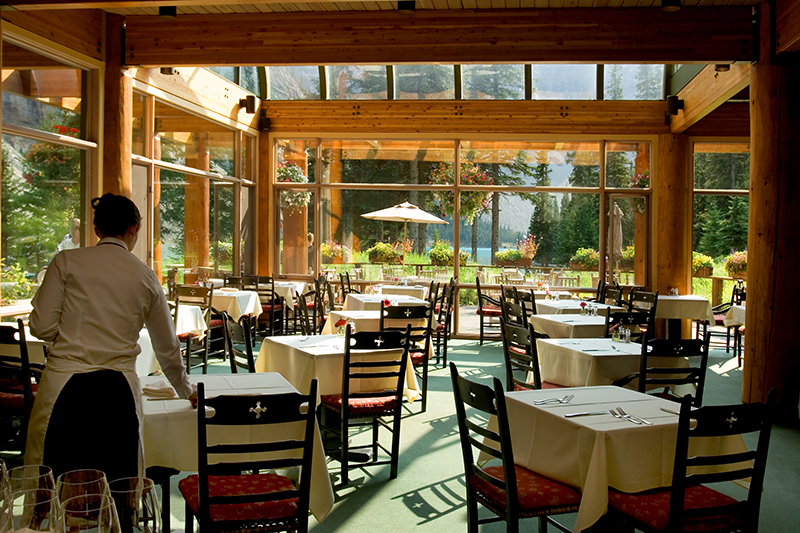

Columns/Blogs
Features
Economy
Future of Work
Gig Economy
Health & Safety
Immigration
Retention
It’s time to future-proof Canada’s tourism industry
By Philip Mondor
 Photo: Natalia Bratslavsky/Adobe Stock
Photo: Natalia Bratslavsky/Adobe Stock Furloughed hospitality workers currently represent 75 per cent of total workers without jobs in Canada.
Yet the hospitality and tourism industry continues to face a skills gap further exasperated by the changing needs ushered in by COVID-19, creating a paradox unique to the industry. That exasperated challenge is expected to play a significant role in Canada’s tourism and economic recovery.
Hospitality is an industry that relies heavily on people. But without a strong workforce, we will not be able to offer the level of service or remain competitive when the border re-opens.
This is a complex problem with complex solutions.
Below is a high-level overview of some of the key challenges and opportunities to ensure a successful recovery post-pandemic.
New set of demands
With fewer guests, hotels and restaurants can’t hold onto full expert teams like they used to. They now require slimmer and more nimble teams that can take on different roles and tasks.
That adaptability and flexibility can be challenging for many workers who may lack the innate or hard skills to do the job, or simply don’t enjoy that type of role — not to mention, hospitality work typically requires face-to-face interaction, which today adds a level of safety risk. Many workers are caregivers to children, elders, or may be at high risk themselves, so returning to work poses a serious safety concern and in some cases, may not be possible.
Management will need to learn how to become more flexible and accommodating for remaining employees.
They must also learn to manage two completely different teams as a result. In addition to our regular anchor teams, we now have ancillary teams, otherwise known as gig or freelance workers that are called upon occasionally for peak demands.
Business HR plans must now actively include community engagement or rely on collaboration of the freelance market. In many cases, businesses will need to partner with their competitors to fill these skills gaps — a completely new concept for our industry.
Impact of border closures
Immigrants have historically made up a big component of the tourism workforce.
In fact, Canada would typically employ thousands of international students to help cover the busy summer period — a perfect match to support peak season and school break. Newcomers to Canada would often be attracted to this sector as a way to gain Canadian experience, which matters when they enter their field of practice in tourism or other industries.
Immigration requires the mobility of people, which wasn’t possible this year. The federal government has an aggressive plan to make up for this gap, but we are expecting a lag that will likely impact tourism for years to come.
That’s why the Government of Canada is looking at policy changes that will help students and temporary foreign workers gain landed immigrant status. The conversation has just started but we hope more industry leaders will speak up to show their support for these new policies.
In the meantime, employers should be examining their practices and protocols.
The nature of work and culture in Canada is unique. It’s important that there are programs in place to support newcomers with those differences.
This can include things like having a more in-depth understanding of the rights of employees, or even more lighthearted, such as what employers might be looking for in terms of decorum.
Maintaining loyalty with staff
The state of the industry is precarious and the longer that staff are furloughed, the more their loyalty wanes. At the same time, other industries that are not privy to things like border closures are recovering at a much faster rate and they are becoming more savvy in attracting hospitality workers to their sector.
It’s important for employers to provide a strong support system for both furloughed and working employees. This includes regular communications, mental health support and professional development to keep employees mentally engaged.
Be sure to reach out to your furloughed staff often and let them know you would love to have them back as soon as you are able to. Keep an open and transparent line of communication for all furloughed and working staff so they’re aware of management’s efforts to bring back teams.
We’ve also learned from the previous crisis that one of the most important things an employer can do is to provide training and professional development. It provides another opportunity for continued communication and keeps employees mentally engaged. It also ensures that employees are armed with the new skills needed for when they return.
While it has been an incredibly challenging year for the hospitality industry, we know those best poised for recovery are the businesses that will navigate their workforce effectively.
 Philip Mondor is the CEO of Tourism HR Canada.
Philip Mondor is the CEO of Tourism HR Canada.
Print this page